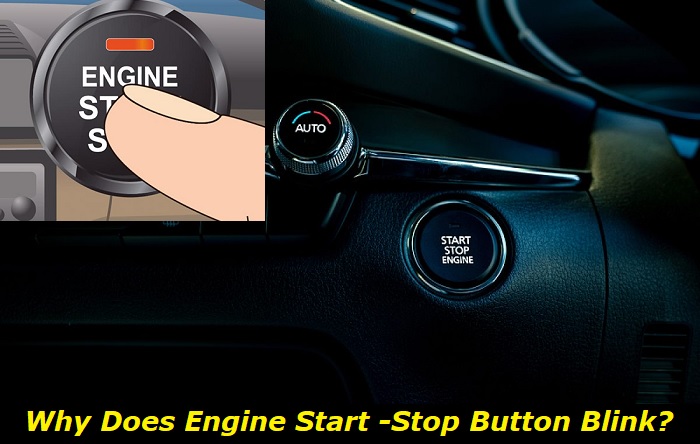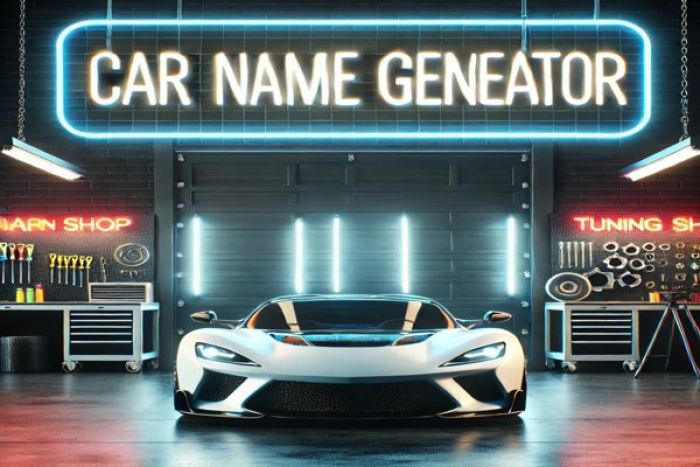The start-stop system was once a novel new piece of technology that could only be found in a few cars. Since then, it has become an indispensable component of modern vehicles. The start-stop system has been praised for increasing fuel economy, reducing accidental collisions, and making vehicles more convenient and foolproof.
Electrical gremlins highlights
- Level of urgency:medium
- DIY inspection:impossible
- DIY repair:impossible
- Can you drive?yes
- Price for repairs:$0 - $300
- Symptoms:glitch, unusual behavior, temporary problem
- Ways to solve:check the battery voltage, check wiring and connections, take it to a professional mechanic

What Color is Your Start-Stop Engine Button Blinking?
Some cars with the push start-stop system allow the button to flash different colors to indicate different conditions. The color and state of your start-stop engine button can provide you with a wealth of information about the state of your start-stop system.
- The Meaning of a Green Start-Stop Engine Button
Typically, a green start-stop light indicates that your engine is running and the vehicle is ready to start. If your light is flashing green, your engine is running, but a different component may prevent the car from starting, e.g., failure to release the steering wheel lock.
- The Meaning of an Amber Start-Stop Engine Button
An amber light indicates while your ignition is on or set to allow the functioning of accessories, your engine has not started. A flashing amber light is the most alarming and indicates a problem with your start-stop system that calls for immediate diagnosis and repair.
Can You Drive When Your Start Stop Engine Button Is Blinking?
The start-stop engine button does not affect the driveability of your car. In most cases, your vehicle will be safe, albeit inefficient, to drive despite the blinking start-stop engine button. Diligent drivers will only drive their vehicles as far as the dealership or their preferred auto repair shop in the presence of a warning light.
A blinking start-stop engine button means the system cannot efficiently manage your fuel consumption and avoid accidental collisions by automatically starting and stopping your engine. Suppose you are used to relying on the start-stop system to kick in automatically. In that case, you will need to exercise caution and remember that your malfunctioning system will not help until it is diagnosed and repaired.
Though your start-stop engine button is not a core safety component, it is not advisable to ignore the light for long. If your car is operated under these conditions, the problem that triggered the light will likely get worse and affect adjacent components.
Common Causes of a Blinking Start-Stop Engine Button
The start-stop system in your vehicle is an automatic technology that does not rely on driver input. This system is controlled by the electronic control unit, which processes data from various sensors and signals your start-stop system to take the appropriate action.
For example, when your stop at a red light, your ECU detects this and instructs the system to stop your engine for reducing idling time. When the light turns green, and you put the pedal to the metal, your ECU will also detect this and cause the start-stop system to turn on your engine.
When your start-stop engine button begins to blink, your ECU has likely received an odd reading from one or more sensors. Anytime readings go below, or above the recommended range, your ECU will pass this message along by causing the start-stop engine button to blink.
Whenever the start-stop engine button is blinking, one of these factors is likely to blame:
- Improper conditions
- Poor battery health or installation of an incompatible battery
- Excessively high or low engine temperature
- Excessive internal humidity
- Braking force
1. Improper Conditions
Improper handling or driving conditions are the most common cause of your start-stop engine button blinking. There are certain conditions under which your start-stop system will fail to engage, despite the lack of any mechanical failure in your vehicle. These conditions include:
- Failure to wear safety belts
- Failure to properly close your car doors and hood
- Activation of the parking assistant feature
- Subjecting your car to a large gradient, e.g., driving up a steep slope
- Positioning your wheels at sharp angles
All these conditions will prevent your start-stop system from engaging or interrupt its activation.
Solution
Read your owner's manual to determine the conditions likely to interfere with the optimal operation of your start-stop system. It may save you from spending money on unnecessary diagnoses and repairs.
2. Poor Battery Health
The start-stop system puts extraordinary strain on your battery due to frequent starts and stops encountered in a single journey. Conventional batteries were designed to handle significantly lower power demands of starting your engine once per drive.
A start-stop battery must provide a continuous charge output for several start-stop cycles. It must have the capacity to charge and discharge severally for each journey. Remember that whenever you stop your car, your electrical components, e.g., lights and radio, will keep drawing power from your battery, thus increasing the load.
Your start-stop system battery is designed to handle the increased demand without breaking a sweat. The incorporated technology lowers the battery's resistance so it can accept charge even during relatively short drives that feature a number of start-stop cycles. While start-stop batteries last longer than conventional starter batteries, they, too, are bound to fail after some time.
Solution
Consult your user manual to confirm the expected lifespan of your battery. The most glaring sign that your battery has seen better days is the failure of your stop-start battery during short drives. If it has served longer than it should, a gradual discharge will eventually trigger the ECU to cause your start-stop engine button to blink.
A weak or dying battery should be replaced with a high-quality compatible alternative. Installing the wrong battery is likely to create various challenges discussed below.
3. Incompatible Battery
As explained above, using a conventional starter battery in a car with an automatic start-stop system is a recipe for disaster. Similarly, choosing a start-stop battery that does not meet the exact specifications of your manufacturer will cause your system to malfunction.
If your start-stop engine button began blinking shortly after installing a new one, it is likely incompatible with your system. If you are hesitant to spend money on a new battery, note that the battery will cause additional problems. These include leakage of battery acid, loss of warranty, poor drivability, and a malfunctioning start-stop system.
Solution
Check your user manual battery specifications against those of the battery installed in your car. If the two are incompatible, you must get a suitable replacement as soon as possible.
4. Electrical Malfunctions
Electrical challenges like a poor ground connection or corrosion can cause your start-stop system to go bonkers.
Solution
Inspect your vehicle for signs of corrosion at the battery terminals, poor grounding, or damaged and loose wiring. If your battery terminals are corroded disconnect the battery and clean the terminals before reinstalling. Loose wires only need to be firmly secured in place.
5. Extreme Temperature
Your start-stop system is likely to suffer when the climate is extreme. Some BMSs automatically deactivate the start-stop function when the temperatures go above or below a specified range. In some cases, the system fails to kick in because the air conditioning system is likely to run for a long and deprive the battery of the capability to engage in frequent start-stop cycles.
Solution
Modern cars have the capacity to run all electrical components without compromising the start-stop system. If your start-stop system is affected by the continuous operation of the AC unit, you should replace it because the odds are that it is on the tail end of its shelf life.
6. Engine Trouble
Suppose a check engine light accompanies your blinking start-stop engine button. Extremely high or low engine temperatures are likely to affect the performance of your start-stop system. An overheating engine causes the radiator fan to go into overdrive and increase the load on your battery. The increased load will affect the performance of your start-stop system as it also relies on battery power. If your engine is very cold, it will also demand more current from your battery to facilitate heat generation.
Solution
Engine trouble, in this case overheating, should be diagnosed by a licensed mechanic as soon as detected. Do not tarry because the longer you take, the more expensive repairs are likely to be. If your engine is suffering from cold weather, ensure you allow a reasonable warm-up period before driving off.
Conclusion
While a blinking start-stop engine button is not the type of car trouble that will ruin your day, it is still recommended to have it checked out as soon as possible.
About the authors
The CarAraC research team is composed of seasoned auto mechanics and automotive industry professionals, including individuals with advanced degrees and certifications in their field. Our team members boast prestigious credentials, reflecting their extensive knowledge and skills. These qualifications include: IMI: Institute of the Motor Industry, ASE-Certified Master Automobile Technicians; Coventry University, Graduate of MA in Automotive Journalism; Politecnico di Torino, Italy, MS Automotive Engineering; Ss. Cyril and Methodius University in Skopje, Mechanical University in Skopje; TOC Automotive College; DHA Suffa University, Department of Mechanical Engineering






Add comment